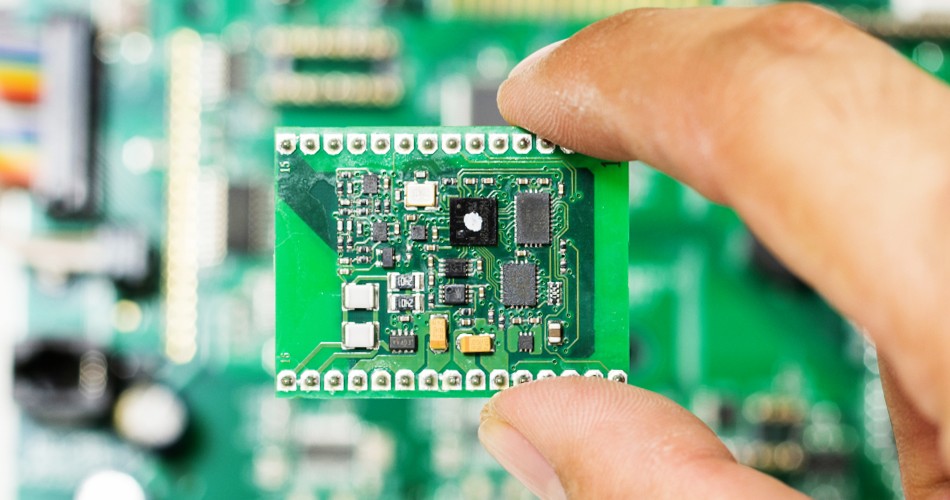- English
- Español
- Português
- русский
- Français
- 日本語
- Deutsch
- tiếng Việt
- Italiano
- Nederlands
- ภาษาไทย
- Polski
- 한국어
- Svenska
- magyar
- Malay
- বাংলা ভাষার
- Dansk
- Suomi
- हिन्दी
- Pilipino
- Türkçe
- Gaeilge
- العربية
- Indonesia
- Norsk
- تمل
- český
- ελληνικά
- український
- Javanese
- فارسی
- தமிழ்
- తెలుగు
- नेपाली
- Burmese
- български
- ລາວ
- Latine
- Қазақша
- Euskal
- Azərbaycan
- Slovenský jazyk
- Македонски
- Lietuvos
- Eesti Keel
- Română
- Slovenski
- मराठी
- Srpski језик
Halogen-free materials in PCBA processing
2024-09-12
With the increasingly stringent environmental regulations and the improvement of people's awareness of environmental protection, halogen-free materials are increasingly widely used in PCBA processing (Printed Circuit Board Assembly). Halogen-free materials not only meet environmental protection requirements, but also improve the performance and reliability of circuit boards. This article will explore halogen-free materials in PCBA processing and introduce their characteristics, advantages and application areas.

1. Definition and characteristics of halogen-free materials
What is halogen-free material
Halogen-free materials refer to materials that do not contain halogen elements (such as chlorine, bromine, etc.). Halogen elements are often used as flame retardants in circuit board processing, but these elements release harmful gases at high temperatures, posing a threat to the environment and human health. Halogen-free materials meet environmental protection and safety requirements by replacing traditional halogen flame retardants.
Characteristics of halogen-free materials
Environmental protection: Halogen-free materials do not contain harmful halogen elements, reduce pollution to the environment, and meet the requirements of environmental protection regulations such as RoHS (Restriction of Hazardous Substances).
Flame retardancy: Although it does not contain traditional halogen flame retardants, halogen-free materials still have excellent flame retardant properties and can effectively prevent the occurrence of fire.
Thermal stability: Halogen-free materials have good thermal stability, can maintain stable performance under high temperature conditions, and are not easy to decompose.
Electrical properties: Halogen-free materials have excellent electrical properties, such as low dielectric constant and low loss factor, and are suitable for high-frequency and high-speed circuits.
2. Advantages of halogen-free materials
Environmental protection and safety
Halogen-free materials do not contain toxic and harmful substances, which reduces pollution to the environment and reduces the impact of electronic products on soil and water sources after disposal. At the same time, halogen-free materials will not release harmful gases under high temperature conditions, ensuring the safety of the production process and the use process.
Improve product performance
The excellent electrical properties and thermal stability of halogen-free materials enable them to perform well in high-frequency and high-speed circuits. Low dielectric constant and low loss factor can reduce attenuation and distortion in signal transmission and improve product performance and reliability.
Compliance with international standards
With increasingly stringent global environmental regulations, the use of halogen-free materials can ensure that electronic products comply with international standards, such as RoHS and WEEE (Waste Electrical and Electronic Equipment Directive), which helps products enter the international market and enhance market competitiveness.
3. Application of halogen-free materials in PCBA processing
High-frequency communication equipment
High-frequency communication equipment, such as 5G base stations, Wi-Fi 6 routers, etc., have extremely high performance requirements for circuit boards. Halogen-free materials, with their low dielectric constant and low loss factor, can meet the needs of these devices for high-speed signal transmission, improve signal integrity and transmission efficiency.
Consumer electronics
Smartphones, tablets and other consumer electronics products are increasingly using halogen-free materials in the production process. These products require high performance, high reliability and environmental protection, and halogen-free materials can meet these requirements and enhance the market competitiveness of products.
Automotive electronics
Automotive electronic equipment, such as electric vehicle control systems and in-vehicle entertainment systems, have high requirements for the thermal stability and environmental protection of circuit boards. The excellent properties of halogen-free materials have made them widely used in the field of automotive electronics, ensuring the stability and safety of equipment in harsh environments.
Industrial control equipment
Industrial control equipment needs to work in harsh environments such as high temperature and high pressure, requiring the circuit board to have excellent thermal stability and reliability. Halogen-free materials can provide good thermal and electrical performance to ensure the normal operation of the equipment under extreme conditions.
Conclusion
The application of halogen-free materials in PCBA processing reflects the combination of environmental protection and high performance. By using halogen-free materials, it can not only reduce environmental pollution and improve product safety, but also meet the needs of high-frequency, high-speed and high-reliability circuits. With the development of technology and increasingly stringent environmental regulations, halogen-free materials will be more widely used in PCBA processing, contributing to the sustainable development of the electronics manufacturing industry. In the future, with the continuous advancement of halogen-free material technology, PCBA processing will usher in more innovations and changes, bringing new development opportunities to the global electronics industry.
-
Delivery Service






-
Payment Options









